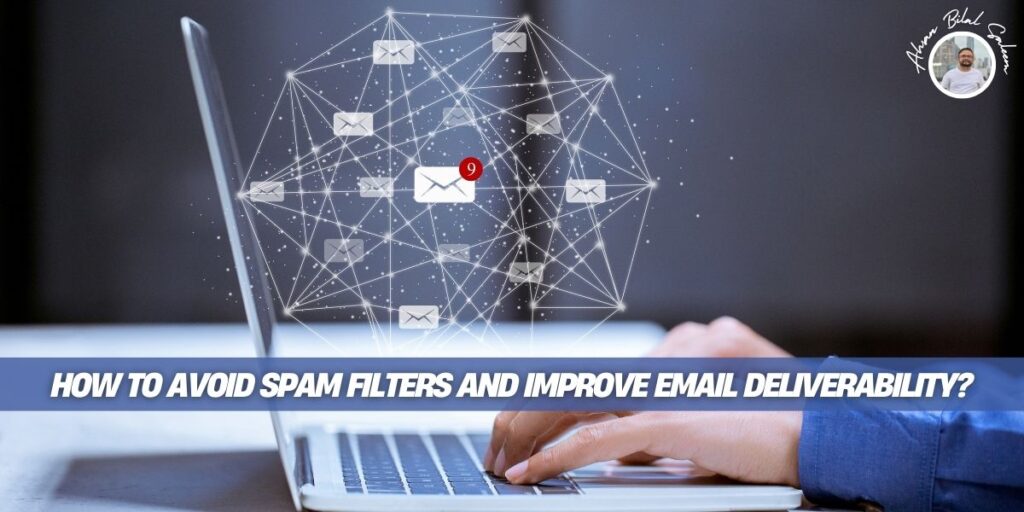Email marketing remains one of the most effective ways to engage with your audience, but getting your emails to land in the inbox instead of the spam folder can be a challenge. Spam filters are becoming more sophisticated, making it crucial for businesses to optimize their email campaigns for better deliverability. In this article, we’ll explore practical strategies to avoid spam filters and improve your email deliverability rates.
Understanding Spam Filters and How They Work
Spam filters are automated systems used by email providers to detect and block unsolicited or harmful emails. They analyze various factors, including the sender’s reputation, email content, and recipient engagement. If an email triggers too many red flags, it gets filtered into the spam folder or blocked entirely.
Spam filters assess:
- The sender’s domain and IP reputation
- The presence of spammy words or excessive punctuation
- The use of misleading subject lines
- High complaint rates or low engagement levels
Understanding these factors can help you craft emails that pass through filters and reach your subscribers’ inboxes.
Use a Recognizable Sender Name and Email Address
One of the first things recipients notice is the sender’s name. They might disregard the email or mark it as spam if they don’t recognize it. To build trust and improve deliverability, use a consistent and recognizable sender name and email address.
Instead of:
- noreply@yourbusiness.com (impersonal and unengaging)
Use:
- jane@yourbusiness.com (personal and credible)
A branded email address adds authenticity and reassures recipients that the email is legitimate.
Optimize Your Subject Lines
Your subject line is critical in determining whether an email gets opened or flagged as spam. Avoid using:
- All caps (e.g., “LIMITED TIME OFFER!!!”)
- Excessive punctuation (“Huge Discount!!! Buy Now!!!”)
- Spammy words like “free,” “guarantee,” or “winner”
Instead, come up with subject lines that are engaging, pertinent, and clear:
- “Exclusive Offer Just for You – 20% Off Today”
- “Here’s How to Get More Out of Your Subscription”
A/B testing various subject lines can assist in determining which one resonates with your audience the most.
Personalize Your Emails
Emails that are generic are more likely to be deleted or marked as spam. Personalization increases engagement and improves email deliverability. Make use of the recipient’s name and tailor the content to their preferences or interactions in the past.
Instead of:
- “Dear Customer, Check Out Our New Products”
Use:
- “Hi John, Here’s Something You Might Love”
Personalized emails show subscribers that your messages are relevant and valuable to them.
Maintain a Healthy Email List
A bloated email list filled with inactive or incorrect addresses can harm your sender reputation. Regularly clean your list by:
- Removing inactive subscribers
- Eliminating duplicate or incorrect emails
- Using a double opt-in process to verify new subscribers
A healthy list ensures higher engagement rates and reduces the chances of emails bouncing or being marked as spam.
Avoid Spam Trigger Words
Emails may be flagged by spam filters if they contain certain words or phrases. Avoid words like:
- “100% free”
- “Guaranteed”
- “Make money fast”
- “Congratulations! You’ve won”
Instead, use natural and conversational language that aligns with your brand’s tone.
Use a Balanced Text-to-Image Ratio
Emails that contain only images or too little text can appear suspicious to spam filters. A good practice is to maintain a 60:40 text-to-image ratio, ensuring that the message is clear even if images are blocked.
- Include meaningful alt text for images
- Avoid embedding important information only in images
- Use a mix of text and visuals to enhance readability
A well-balanced email structure improves both deliverability and user experience.
Ensure Proper Email Authentication
Email authentication protocols help email providers verify that your emails are legitimate. Implement:
- SPF (Sender Policy Framework) – Prevents spammers from sending emails on your behalf
- DKIM (DomainKeys Identified Mail) – Adds a digital signature to verify authenticity
- DMARC (Domain-based Message Authentication, Reporting & Conformance) – Protects against phishing and email spoofing
These protocols improve sender reputation and reduce the likelihood of emails being flagged as spam.
Encourage Subscriber Engagement
Email providers track recipient behavior to determine whether your emails are valuable or spammy. To boost engagement:
- Use compelling CTAs that encourage replies
- Ask subscribers to whitelist your email (add you to their contacts)
- When recipients are most likely to engage, send emails at optimal times.
Higher engagement rates signal to email providers that your messages are legitimate and valuable.
Monitor Your Email Performance
Regularly analyze email performance metrics such as:
- Open rates (Indicates how many recipients open your emails)
- Click-through rates (CTR) (Shows engagement levels)
- Bounce rates (Indicates how many emails fail to reach inboxes)
- Complaints about spam can harm your sender’s reputation if they are high.
Use these insights to refine your email strategy and improve future deliverability.
Test Your Emails Before Sending
Before sending a campaign, run spam tests using tools like:
- Mail Tester
- GlockApps
- Litmus
These tools identify potential spam triggers, broken links, or formatting issues, allowing you to make adjustments before emails reach subscribers.
Send Emails Consistently
Inconsistent email sending patterns can negatively impact deliverability. Instead of sending emails sporadically, maintain a consistent schedule that aligns with your audience’s expectations.
For example:
- Weekly newsletters for updates and promotions
- Monthly check-ins for engagement
- Automated follow-ups for abandoned carts or new sign-ups
Consistency helps establish credibility and keeps your audience engaged without overwhelming them.
Conclusion
Avoiding spam filters and improving email deliverability requires a combination of best practices, from crafting engaging content to maintaining a clean email list and implementing authentication protocols. By focusing on building trust with your audience, using personalized messaging, and monitoring key performance metrics, you can ensure your emails reach inboxes and drive meaningful engagement. Implement these strategies today to maximize the success of your email marketing campaigns.
